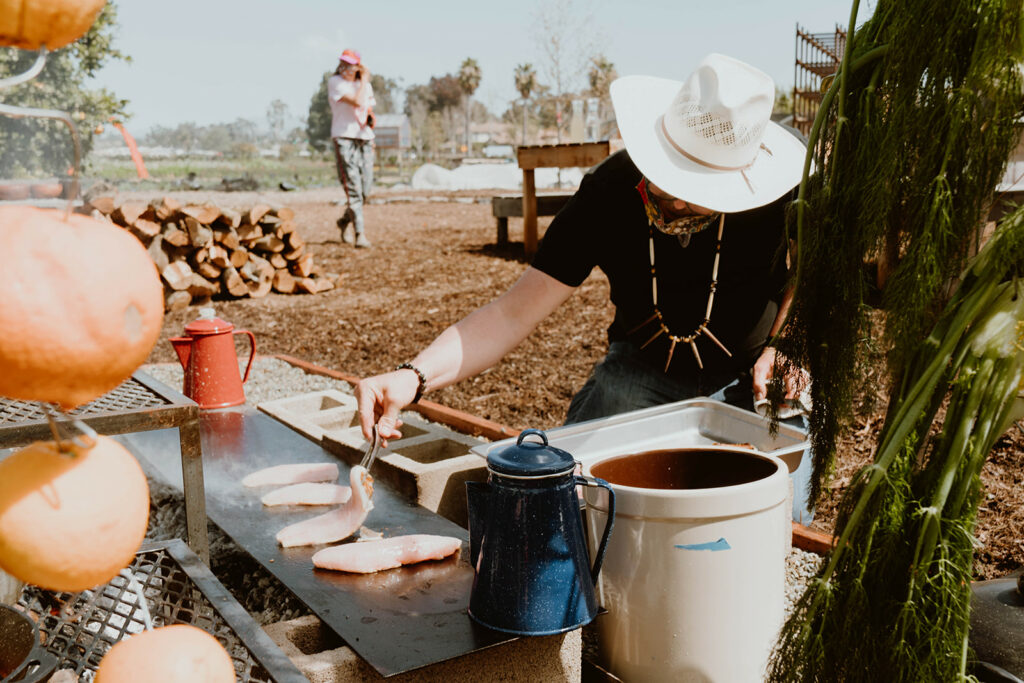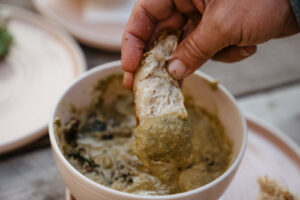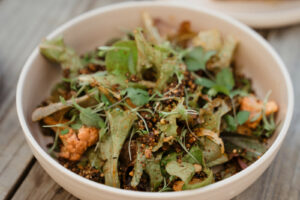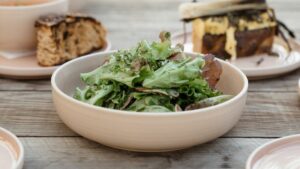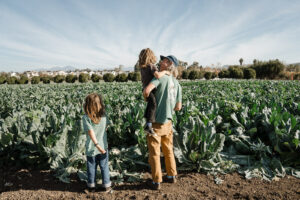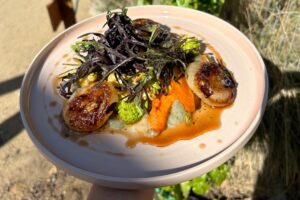I first heard about The Ecology Center from a friend, who described it as a “jewel” tucked away in the hills of Orange County. Coming here, I saw how right he was. This setting in the San Juan Valley presents a one-in-a-million combination of resources: a fertile valley cradling 25 acres of organic food, with the ocean on one side, the desert on the other, and the culture of a village steeped in 500 years of heritage.
Back in 2014, I left the world of fine dining to work on projects that create experiences that open people’s minds and stoke the fires of meaningful change. In our individual lives, in our food systems, in the health of our natural world. For me, food is a powerful tool for unearthing the voice of the land where it was grown. That was the ideology that led to HEARTH, our inaugural culinary residency here at The Ecology Center. The idea is to tell a universal story through the ingredients and tools of a specific place. And, along the way, have some fun by blowing up the usual expectations of a fine dining experience.

This project can only come to life where there’s a real spirit, a voice within the terrain. And being here, I can feel that spirit. That voice is ready to be released. And even more importantly, the community is ready to hear it. Coming out of the past year of COVID lockdown, I believe people are ready more than ever for an experience that takes them out of themselves. We’re looking for what’s next in our lives, and in the life of this planet. We have a once-in-a-lifetime moment to not simply stage a powerful experience, but to really expand the way we think, act and live as a community.
If we follow the voice of this land, it can carry us to some really exciting places. Thank you for joining us on this journey.
There’s a wide range of corn being planted this year. That’s going to be an unbelievable situation. Precious heirloom corns being used for nixtamal and grinding for polenta.
All the beans we’ve been growing with master seedsaver Mike Reske from UC Davis. We’re part of an exclusive group pioneering these beans. Not only will it impact the HEARTH dinner, but it will impact the future of the farm, expanding the diversity of our biome and protect the health of our crops against mosaic virus.
I went out on a chile scavenger hunt, looking for specific chiles that are native to the southwest. More than 50 varieties that we planted this year that you won’t find anywhere else. Chama Red, heirloom chipotles,

Native high plain desert plants going into the market garden, that will be used to create a unique tea blend for the end of the evening. Finish the evening with a flavor and aroma that is of the place.
Our hope is that by the end of the summer, we’ll have a Milpa counter at the Farm Stand, with beans, corn, and chiles that are deeply of the place.
Menu wise, we’ve partnered with a couple of seafood guys. Using everything that comes in off the boat, showcase the variety of things that are available here on the California coast.
The meat guy has Brest chicken, pigeon, partridge, heritage pork, ducks–want to use these to show the availability of what’s here, but in unconventional ways
It pushes us up against some things. I’ve never cooked with live uni, but when the day comes, we’ll do it.

A lot of people are in on it, a lot of people putting their best foot forward to
Food wise, it’ll be a test of evolution here. Things are changing based on what’s abundant and available, and that’s super cool. I haven’t had the opportunity before to work that way. The R&D work, I’m really intent on making these feasts unique, something to keep the conversation lively for years to come, expand our community to include people who
Everything’s evolving. The vibe and energy are really solid.


